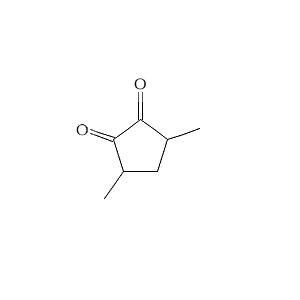What Is Caramel?
Probably not what you are thinking. Caramel is a natural coloring ingredient that is used in skincare and cosmetics to improve the appearance of the product by giving it a caramel, brown hue.
Caramel colors refer to a family of distinct red to dark-brown liquids or powders that are used as color ingredients.
Similar to what you would be familiar with if you have ever made caramel sweets, caramel is created through a process called caramelization. Caramelization involves slowly heating sugars to around 338 °F or 170 °C in the presence of small amounts of acids, alkalis, or salts.
This process removes the water from the sugar. As the sugar melts, the molecules break down and re-form into compounds with a characteristic dark brown color. Of note, the term ‘caramel’ is often used to describe confections and flavors made from caramelized sugar, whereas the term ‘caramel color’ only describes the color ingredient.
The most commonly-used sugar source to produce caramel color is high dextrose corn syrup. However, invert sugar and cane sugar are also used. High dextrose corn syrup is the preferred carbohydrate since the resulting caramel color is more stable over time and less thick. This makes it easier to use in cosmetic formulations.
Caramel color has been used to improve the color of cosmetics and skincare products for years. It is often found in products such as hair shampoos, tanning products, makeup, and many other skin and hair care products.

Caramel
the good: Caramel color ingredients are used to improve the appearance of products by adding a rich light brown color to the product.
the not so good: Caramel color doesn’t provide the skin with any benefits, it is used only to improve the color of the product.
Who is it for? All skin types except those that have an identified allergy to it.
Synergetic ingredients: Works well with most ingredients
Keep an eye on: You will also find caramel color ingredients in food products and even beverages.
Why Is Caramel Used?
Caramel functions as a natural coloring agent in cosmetics and skincare products. The caramel color is purely for visual purposes, the rich light brown color makes the product look delicious and inviting but it does little else for the product. Caramel color is purely for aesthetics and doesn’t benefit or negatively impact the skin.
However, all caramel colors are not the same. They are divided into four classes which vary slightly in terms of their charge and manufacture. This can affect how they are used in skincare products.
Class I, or plain caramel colors, are the most minimally processed of the four classes. The carbohydrate raw material is simply heated, and no ammonium or sulfite compounds are allowed in Class I production. The resulting caramel color carries a neutral to slightly negative ionic charge.
Class II, or caustic sulfite caramel colors, involves heating the carbohydrate raw material in the presence of sulfite compounds. The resulting caramel color carries a negative ionic charge.
Class III, or ammonia caramel colors, involves heating the carbohydrate raw material in the presence of ammonia compounds. The resulting low-sulfite caramel color carries a positive ionic charge.
Class IV, or sulfite ammonia caramel colors, involves heating the carbohydrate raw material in the presence of both sulfite and ammonium compounds. The resulting caramel color carries a negative ionic charge. These are the most widely produced caramel colors.
What Are The Other Uses Of Caramel Color?
In addition, to use in cosmetics, caramel color has been used in foods and beverages for over 150 years. The first commercially available caramel colors were manufactured in the United States in 1863.
Caramel color is used to impart color in numerous foods and beverages, including colas, soy sauce, seasonings, bread, pet food, cereals, etc. In fact, caramel color is the world’s most widely used food colorant.
Is Caramel Vegan?
Caramel is made from sugar sources and acids, alkalis, or salts. The main source of the sugar used to make caramel coloring is corn. It is generally considered that caramel coloring is a vegan product both in skincare applications and in food and beverages.
If you are looking for a vegan product, make sure to check that the product is cruelty-free and the rest of the ingredients are also vegan.
Is Caramel Safe?
The United States Food and Drug Administration includes caramel colors on its list of substances considered Generally Recognized as Safe or GRAS.
Caramel is determined to be safe for use in coloring cosmetics and personal care products, including products applied to the lips and area of the eye. The Cosmetic Ingredient Review Expert Panel, a group responsible for evaluating the safety of skincare ingredients, has deferred the evaluation of this ingredient because the safety has been assessed by FDA.
What About 4-Mel and Caramel?
Some people may be concerned with 4-MeI (4-Methylimidazole), which is a compound that forms during the production of Class III and Class IV caramel colors.
In the late 1960s, 4-Mel was found to elicit neurotoxicity at high doses in animals. However, more current data has revealed there is no evidence that 4-Mel causes cancer or poses any other health risks to humans.
4-Mel forms naturally during the heating, roasting, or cooking process of many foods. Furthermore, the concern regarding 4-Mel was more applicable to food and beverage products containing caramel color rather than cosmetics.
References:
Sengar G, Sharma HK. Food caramels: a review. J Food Sci Technol. 2014;51(9):1686-1696.







